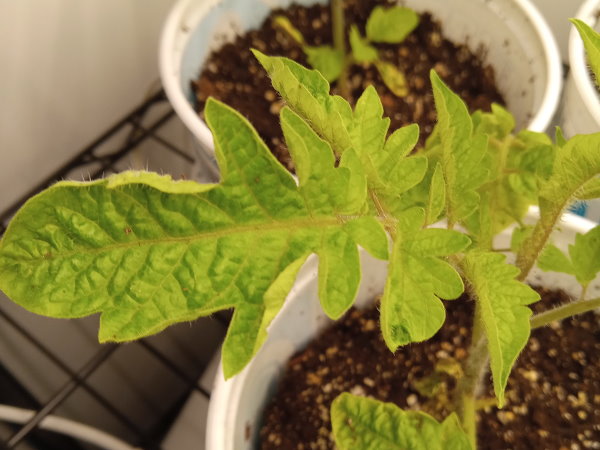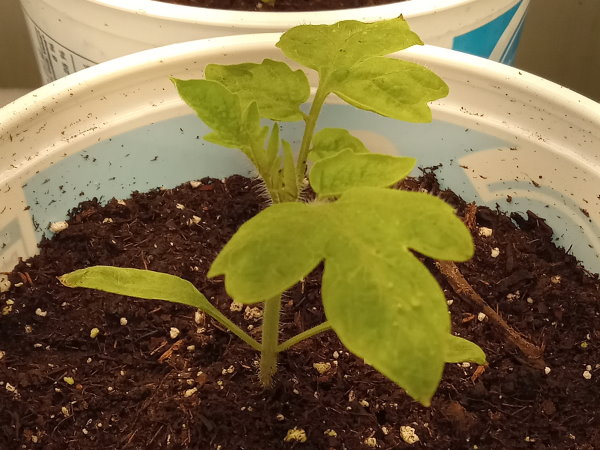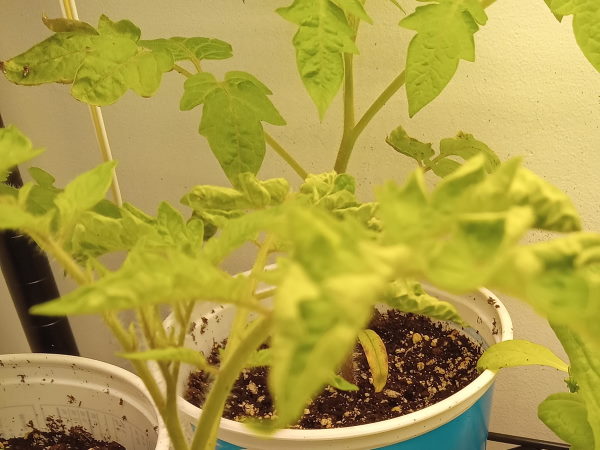- Homesteading
- Growing Vegetables
- Aminopyralid Herbicide Damage in Tomato Plants
Aminopyralid Herbicide Damage in Tomato Plants
How to Spot It, and How to Fix It
Tomatoes, and many other plants in the Solanacea family, are very susceptible to damage from Aminopyralid herbicides, which are in almost every commonly available potting soil on the market now, as well as other amendments like steer manure.
If you commonly add steer manure or horse manure to your soil for growing on tomatoes to maturity, you may be disappointed in how they appear and their lack of thriftiness.
For two years in the past I grew tomatoes, some from seed, and others were purchased from a local greenhouse, as little plants.
They all looked great until I potted them into the large pots I normally used to grow them to fruiting stage. I used a potting soil mixed with steer manure from bags, which I used to swear by. A few days in, they looked okay, until the roots reached the contaminated soil.
A few days after that, the leaves started to curl, in a distinctive pattern. The edges of the leaves seemed to stop growing, while the centers continued, but they looked horribly sickly, getting worse by the day. Eventually, the leaves resembled seersucker, a type of fabric common in old gents suits and childrens play gear.
New growth curled up, and appeared deformed.
 The first signs of damage, now I know what they look like. Curling leaves, with the margins starting to fold in, and the texture, showing ripples like seersucker fabric
The first signs of damage, now I know what they look like. Curling leaves, with the margins starting to fold in, and the texture, showing ripples like seersucker fabricDisheartened and baffled at the cause, I ripped them out and gave up on them. Recently, I found pictures of similar damage on tomatoes, so I knew what I was dealing with.
Aminopyralid herbicide damage on tomato plants has pretty distinctive characteristics, so suspecting the cause was the soil mix I used, I went into horticultural action.
 The damage gets worse - you have two options; repot them, or throw them out. Here you can see the extreme deformation of the shoots in the background, and the yellowing foliage in the foreground of the image.
The damage gets worse - you have two options; repot them, or throw them out. Here you can see the extreme deformation of the shoots in the background, and the yellowing foliage in the foreground of the image.This year, for the first time, I didn't just give up on them. I attempted to fix what I was certain was the problem. I took them out of the suspected contaminated soil (a popular and often used brand) and took all the soil off the roots, then soaked them in a dilute of Super Thrive, a few drops in about a half a liter of water.
They soaked in that for a few hours, then I potted them again into a soil mix with peat moss, perlite and some miccorhizae, watered them well, and waited.
 Recovery, with new growth. These plants are so sensitive to this herbicide that the only solution is to completely depot them, rinse off the contaminated soil, and repot into clean mix.
Recovery, with new growth. These plants are so sensitive to this herbicide that the only solution is to completely depot them, rinse off the contaminated soil, and repot into clean mix.I'm happy to report that although it took about a week of coddling, they look much better today. You can see the progress from extremely sick and dying, to recovering and actively growing.
For the first time, I feel confident that I'll get a good crop of tomatoes off these plants, once they reach fruiting size and get planted in the garden after all risk of frost has passed, at the end of May or into June.
I know the soil in the garden will be okay, as there were tomatoes growing in it when we moved into our new home.
So if your tomatoes suddenly seem to go downhill, a few days after transplanting, suspect aminopyralid herbicide damage. Now you know the symptoms, and here is the solution. Act quickly, and you just might save them to have a harvest from them.
Update; May 2, 2024
I discovered, on another site, that the function of this herbicide is to disrupt the way cells stack on the plant. Unfortunately, this seems to stay with a plant when it's affected, even if you remove the soil and repot into clean mix.
So, I made the decision to take two of the plants most damaged and discard them, and plant more seeds.
In an interesting side note, the roots on the affected plants were amazingly thick and obviously healthy. I think this is due to the Super Thrive they were soaked in.
 The damage still shows, even in new leaves, so it's decision time
The damage still shows, even in new leaves, so it's decision timeAs you can see in this image, taken today, that the one in front is still curling and showing the symptoms. The one in the back is actually the same age, and mistakenly ended up in the soil bin for a few days until I found it and repotted it.
It's catching up in size, and showing no signs of any damage, because it never contacted the contaminated soil. I've kept two of the less damaged, as control plants.















